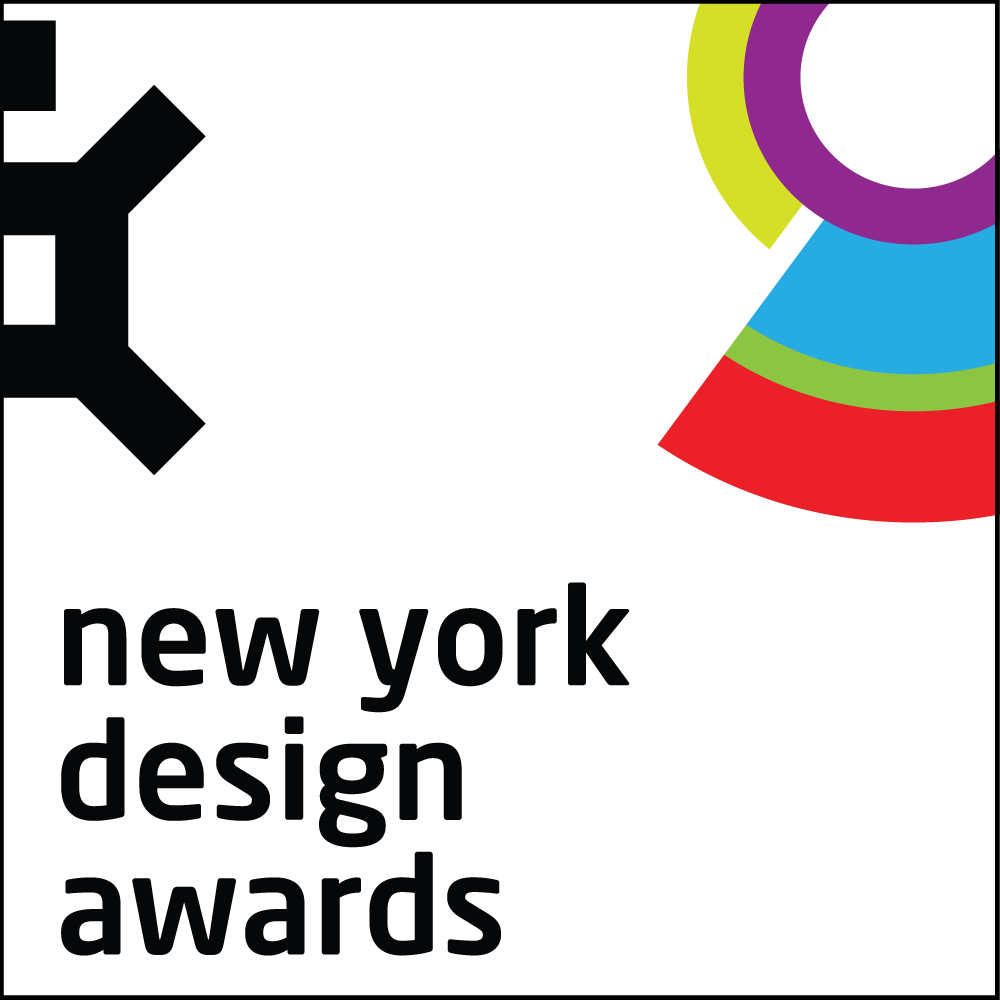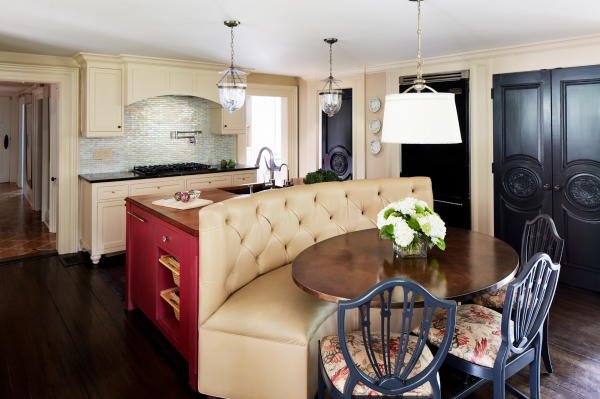
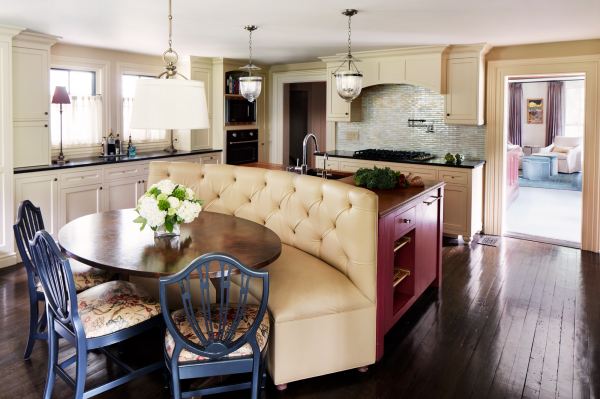


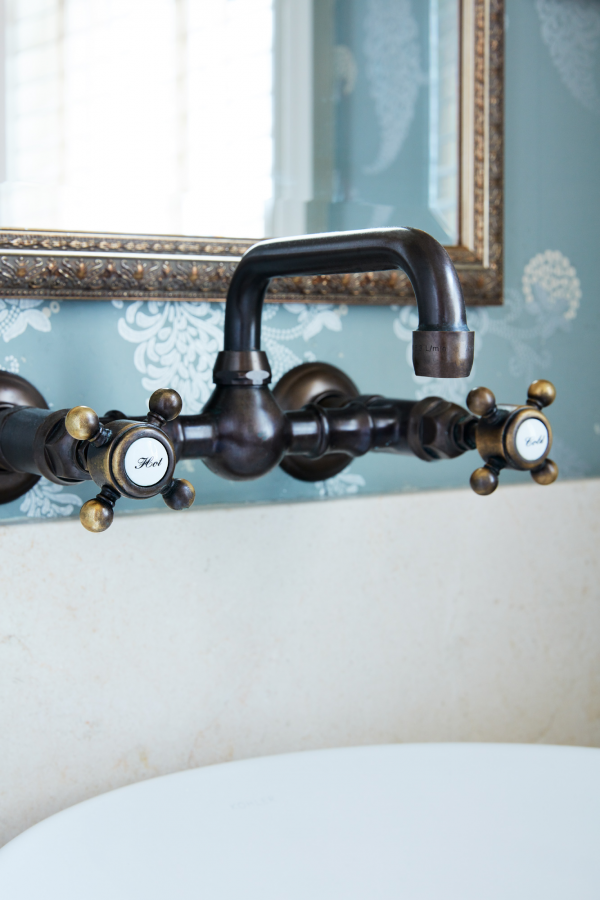
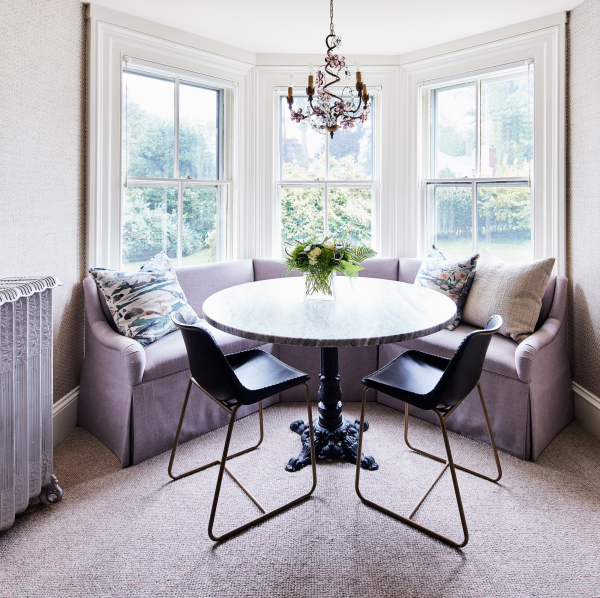



Image Credit : Mark Weinberg

Project Overview
Being asked to gut-renovate a 1700s' farmhouse to create a kitchen, eat-in kitchen, powder room, laundry room, sunroom, and renovate two small rooms into one cohesive family room in an eco-friendly way- is no small task. Yet, so worth the effort.
The brief from the client was clear: Be as eco conscious as possible.
This project got me doing a deep dive into eco-awareness. How do our design choices affect the environment? It also inspired me to incorporate eco-friendly interior design whenever possible.
My clients pushed us on every thing that we brought into their home to be more eco-friendly and to have a smaller carbon footprint. Could this be more efficient? Could that be having a second life? Could this be recycled? Could that be a better material that is more eco-friendly and efficient? Can we donate or make sure our old furnishings are being recycled?
After doing some research, it was second nature to pull together eco-friendly interior design selections. The project became even more beautiful with its smaller carbon footprint.
Project Commissioner
Project Creator
Project Brief
We stood shoulder to shoulder, client gripping a steaming cup of coffee. The scene was dark, filthy, and cold. What the hell had happened? It was supposed to be routine.
The contractor called earlier that day. We gutted the kitchen, as planned. The problem came when we removed the tile, then the floor underneath, and the layer beneath that, when suddenly; dirt. And, an open water well. No foundation.
We figured it out. Back in the day, in the 1700s, kitchens were not connected to the living quarters as a fire precaution. At some point, a breezeway had been constructed to brave the elements. That had become a proper room, you can see how the layers and years had concealed the utter lack of foundation.
Turns out the wood framing at the base of the breezeway was made from solid tree trunks, which, over 200 years later, had petrified and was as solid as stone. Thank goodness - as by this time there was a fully functioning 2nd floor above…
Luckily this client was on board to restore this beautiful farmhouse in an eco-friendly way...and kept their cool while we retrofitted their home with the structure standards of today. The clients and I worked together to incorporate beautiful eco-friendly design choices throughout the home.
Project Innovation/Need
Recycling the old and making it new is much more eco-friendly than sourcing new materials. Working with local vendors ensured that everything was as green as possible. Using antiques and recycled materials is a beautiful way to incorporate pieces that have age, soul, and grit.
We added a sunroom, continued the wrap-around porch, and incorporated access to the amazing kitchen garden. The food composter was built into the kitchen - no need for disposal - everything gets reused in the garden after compost.
The laundry room doors and hardware are both vintage. They were found in architectural salvage yards; proof that you don't need new materials to make a major statement.
In the powder room, our stone vendor used a stone remnant as the counter for the vintage wash stand. The wallpaper is by Farrow and Ball, and made with water-based paint and paper sourced from Forest Stewardship Council (FSC®) accredited suppliers.
The heating grates throughout were found at an architectural salvage yard. The bell jar pendants above the kitchen island are antiques. A raspberry island with a teak counter backs up to a camel faux-leather booth, custom-made oval table and vintage chairs. Crystal knobs on the kitchen island are vintage. Soapstone on the surrounding countertops is a green choice because the material was sourced locally on the East Coast and in its natural state.
All kitchen flooring is made from reclaimed wood, and is heated - a wonderful feeling and an efficient way to heat a room.
Design Challenge
At first, sourcing vintage and/or recycled materials felt difficult. However, once we committed to the challenge, it became an amazing opportunity to let the project ebb and flow depending on what we found at the local architectural salvage yards and antique markets.
Sustainability
This project inspired me to further hone my skills in eco-friendly interior design, and I am now an Accredited Professional with the Sustainable Furnishings Council.
The GREENleader course I took for accreditation provided a ton of detailed information on the environmental issues affecting our choices and the wide range of product solutions, most of which don’t cost any more than ordinary ones. It’s simply a matter of knowing the right places to look and the right questions to ask.
I continue to design with a greater understanding of our environmental impact - naturally making choices that ensure a beautiful project and a small carbon footprint.
This project features all vintage furniture, eco-friendly Viking appliances, natural and unprocessed fabrics, wallpapers and materials used throughout, LED or vintage lights, radiant-heat efficient heating systems tied to the existing radiant heat system for efficient, consistent heat, eco sustainable plumbing throughout, windows of the highest eco rating available, solar roller shades in the sunroom to contain or reduce heat in the room, and low-VOC paint used throughout.
Environmental Design
This award celebrates innovative and creative design for environmental projects. Consideration given to materials, finishes, sustainablility and environmental impact.
More Details

